Sleep is likely to be in short supply this month as the country follows Japan’s progress in the 2006 Football World Cup in Germany. As the team heads to Europe, Jon Day asks national captain Tsuneyasu Miyamoto what the stalwart defender hopes to take away from soccer’s glamorous tournament.
When Japan’s first game at the 2006 Football World Cup finally gets underway on June 12, the players are bound to have a few butterflies in their stomachs. Drawn in a relatively even group that also includes reigning champions Brazil, Japan faces Australia in its opening match of the finals in Germany in what is quickly shaping up to be a pivotal moment in the team’s campaign. Win, and the squad moves one step closer to achieving its stated goal of bettering its second-round appearance in front of a partisan home crowd in 2002; lose, and the team is staring down the barrel of an early exit from the tournament in only the first week.
The game is of special importance to captain Tsuneyasu Miyamoto, who is quick to acknowledge the world cup is one of the biggest tournaments in his professional career to date. Having witnessed first-hand the kind of attention that can be garnered by getting through to the knock-out stages of the competition, he realizes the chances of securing a lucrative contract overseas can be enhanced with solid team performances at soccer’s showcase event.
Four years ago, co-hosts Japan topped their group after drawing with Belgium and securing emotional victories over Tunisia and Russia. A solitary goal to Turkey in the second round eventually knocked the Blues out of the 2002 competition, but not before Japan had made a name for itself as a nation that could produce some decent football talent.
Myriad Japanese players have since headed overseas in the past four years to play in high-profile clubs in Europe, including the powerful mid-field trio of Hidetoshi Nakata (Bolton Wanderers), Shunsuke Nakamura (Celtic) and Shinji Ono (Feyenoord), as well as up-and-coming striker Sota Hirayama, who has been hitting the back of the net for Dutch club Heracles Almelo.
The trend has certainly not escaped Miyamoto, who has until now played his entire career for Gamba Osaka in the J-League. As if the burden of responsibility as captain and the expectation of fans in Japan weren’t difficult enough, Miyamoto is well aware that every aspect of his game will be carefully scrutinized by European football clubs who are looking to bolster their back four with a central defender they can trust.
From a player’s perspective, the challenge doesn’t seem to concern Japan’s captain in the slightest.
“Playing in Europe has and continues to be my desire as a football player,” Miyamoto says. “I think it’s natural for a footballer to aspire to achieve higher levels. Maybe if I can perform well in the coming world cup in Germany, some European clubs might be interested in me.”
He realizes, however, that playing in European leagues is not particularly easy for players from the Asian confederation.
“During my experiences in the Sydney Olympics and the previous world cup, I thought in order for me to jump to the next level it was time for me to play in Europe,” he says, “but it is not easy as a Japanese defender to transfer to one of the top European leagues like the Premiership or Serie A. The numbers of players brought in from outside of the European Union are restricted and in the case of acquiring Japanese players, clubs tend to choose mid-fielders.
“Clubs were interested in me but the conditions and the timing didn’t match. I played in the FIFA Confederations Cup in Germany last June and received an offer from Italian club Treviso FC, but I chose to stay with Gamba Osaka because I wanted to win the J-League championship with Gamba. As a result we won the league, which I’d been desperate to do for the past 10 years!”
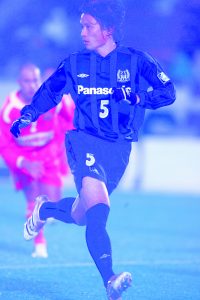 There’s no doubt that Miyamoto is a gifted footballer who plays to his strengths and reads the game well. The FIFA website describes Miyamoto as “a key player in Japan’s national team, with the ability to defend aggressively and distribute the ball effectively from the back.” It’s certainly difficult to argue with this synopsis.
There’s no doubt that Miyamoto is a gifted footballer who plays to his strengths and reads the game well. The FIFA website describes Miyamoto as “a key player in Japan’s national team, with the ability to defend aggressively and distribute the ball effectively from the back.” It’s certainly difficult to argue with this synopsis.
At 176 centimeters, he’s well below the average height of most defenders playing in Europe. At 168 centimeters, however, Brazilian international and Real Madrid icon Roberto Carlos has already rewritten the rulebook on height prerequisites for defenders, so this in itself is not a limiting factor.
Over the past four years, Miyamoto has grown as a player both physically and mentally. Indeed, it seems a long time ago that he played in the 2002 competition with a broken nose that required him to wear a black face support (attracting a whole legion of fans in the process). He was not former manager Philippe Troussier’s first choice for center back at the time, but played through the pain and managed to cement his place in the starting line-up with stoic performances on the pitch. His enthusiasm didn’t go unnoticed by several clubs in Europe, and there were even unsubstantiated rumors of talks with England’s West Ham United.
Miyamoto expects a much tougher challenge against Australia, Croatia and Brazil in the group stages of this year’s competition than they faced in front of a vocal home crowd in 2002, and is well aware that he needs to be at the top of his game. “My body and brain have naturally learned how to compete against high-profile international teams and players in such big competitions,” he says. “I think my skill and ability to intercept and cover in and around the penalty area, to prevent opposing strikers attacking at full speed is better than it was four years ago.
“As captain of the national team, I’ve also needed to learn such things as how to control the team in difficult conditions. As for competing with top-international players like Brazil’s Ronaldinho, I’ve been working on my speed and strength.”
It was in fact another South American football wizard with ball skills, close control, acceleration, vision and finesse not dissimilar to that of two-time winner of the World Footballer of the Year award Ronaldinho, that first inspired Miyamoto to switch his loyalties from baseball to football 20 years ago.
“I first became interested in football when I was nine years old,” he says. “My father bought our family a VCR and we recorded the matches of the 1986 FIFA World Cup in Mexico. I was so amazed when watching Maradona play in the tournament and football suddenly became a big part of my life. At that time I was a big baseball fan and was playing softball in elementary school, but I changed to football right away.
“I joined Gamba Osaka’s youth team at 15 years old. I chose Gamba because I wanted to become a better player and I thought that under the guidance of quality coaches and playing with high-level players, I could achieve this. Of course I knew that most of the members of Gamba’s youth team were aiming to play for the first team as professionals, but in the beginning my will was not that strong and I felt everyone else in the team was better than me. My family didn’t consider me becoming a professional soccer player and I was thinking about going to college as well. It wasn’t until at the age of 17 when I was selected as a member of the Japan U-17 team that I started thinking seriously about turning professional. In June of 1994, my coach, Mr Uenoyama, told me the first team was interested in me. At that time I realized I had to take this great opportunity.”
Natural ability aside, it takes as special kind of resilience and determination to play football at a professional level. Young players must have passion, dedication, motivation and energy for the game, as well as the maturity to balance time and energy-consuming training sessions and matches with school, exams, friends and family. In a sense, playing professional football is the easy part and it’s other aspects of a player’s life that must be remolded in order to make it happen. If, however, a young mind can cope with the inordinate pressures surrounding youth football, half the battle has been won.
“I didn’t want to end up as just a football player and my parents were quite strict about my education,” he says. “I had to go to cram school after training at Gamba every evening in preparation for applying to university, even though I was already aiming to become a professional footballer.
“Those days were really tough. Every night I’d go to cram school around 7pm and come home about 11pm, and then I’d have to do my homework. I was exhausted, rarely getting to bed before 1am. After entering Doshisha University, the hard days continued. Sometimes I’d have to go to class the following day after playing for Gamba or fly back from away games just to be on time for an exam.
“It was at that time I came across the phrase ‘seize the day’, which has since motivated me to take on and achieve many different tasks every day.”
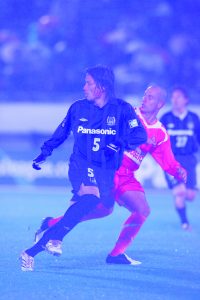 Young footballers are shaped and molded in their formative years by their early experiences of the game. David Beckham, for example, is a product of Bobby Charlton Soccer School, entering the program as an 11 year-old in 1986. Miyamoto and national teammate Junichi Inamoto, who plays for West Bromwich Albion in England’s Premier League, both graduated from Gamba Osaka’s highly reputable youth program, but the pair is a far cry from the cradle-to-grave player typically found in Europe.
Young footballers are shaped and molded in their formative years by their early experiences of the game. David Beckham, for example, is a product of Bobby Charlton Soccer School, entering the program as an 11 year-old in 1986. Miyamoto and national teammate Junichi Inamoto, who plays for West Bromwich Albion in England’s Premier League, both graduated from Gamba Osaka’s highly reputable youth program, but the pair is a far cry from the cradle-to-grave player typically found in Europe.
Critics of grassroots football programs in Japan argue there are few opportunities for local kids to play soccer with children from other countries, thereby limiting the overall development of the game here. There’s the British Football Academy, a respected school for children operating in the Kanto area that teaches football skills to kids from more than 30 different countries, including Japan, but such international entities are generally the exception to the rule rather than the norm.
“I think it’s important for kids to experience different styles of football when they are young,” Miyamoto says. “It can be achieved by the kids playing international matches or by going abroad for a few weeks of training. I hope there will be more opportunities provided for kids so that the J-League will develop into an exciting football league in the future.”
Foreign influences, on the other hand, are pervasive in the higher echelons of the game in Japan. Frenchman Philippe Troussier masterminded the 2002 campaign before heading to Qatar and handing the reins over to Brazilian football legend Zico.
Zico hasn’t had the easiest of times at the helm and several lackluster performances by the squad during the early qualifying stages of the 2006 tournament had sports journalists and the general public baying for blood. There were even a few rumors linking the Japan Football Association with former Yugoslavian coach Ivica Osim. But last-gasp victories over Oman and North Korea ensured Japan would make its third finals appearance, and Miyamoto himself is in full support of the besieged Brazilian.
“Zico is what’s known as a football god,” he says. “He’s still a great player. We sometimes see him pass, trap the ball and shoot during the national team training camps and we are always amazed by his ability. His technique is unbelievable. As a manager he tells us to think for ourselves, not wait for directions during a match. He doesn’t just dictate strategies to us, but makes us think and communicate as a team. Philippe Troussier taught us many things that were very useful at that time, but if we are to get to the next level we have to think by ourselves.”
So with the squad team packing its kit and heading off to Europe, what does Miyamoto hope to take away from the 2006 tournament?
“I cannot predict any scores for my team in Germany,” he says, “but there is a mission I have to fulfill, which is to take Japan through to the quarter-finals. I know this is not an easy task, but it has to be achieved because I’m not satisfied with what we achieved in 2002.”
Story by Jon Day
From J SELECT Magazine, June 2006

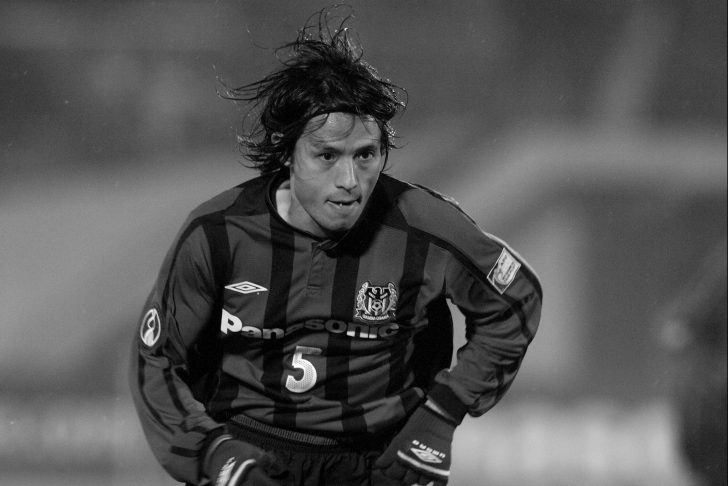



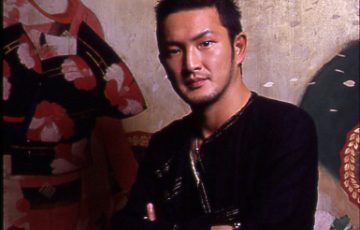

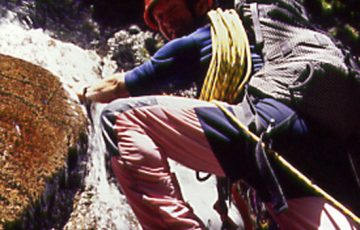


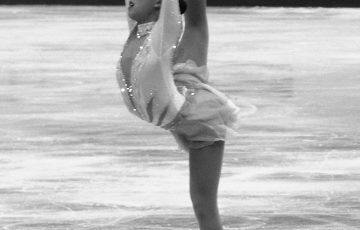
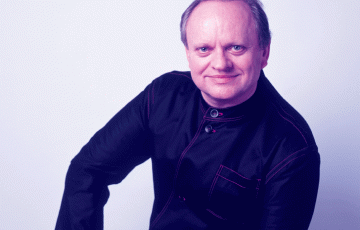



Recent Comments